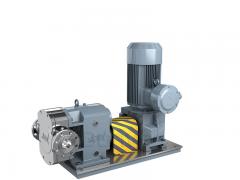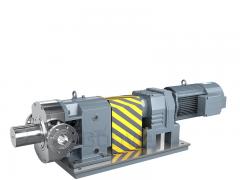Equipment for ketchup or tomato sauce production

As a recognized market leader in pumping and mixing technology, Bonve has been at the forefront of supplying its rotary lobe pumps and homogenizers to food industry for over 18 years. Tomato sauces (Ketchup) is a typical product we served and our heavy customer is Heinz.
The process
Tomatoes are generally processed into ketchup or tomato sauce. The ketchup line consists of five main parts: fresh tomato receiving, cleaning and sorting systems; crushing and beating systems; concentration systems; sterilization systems; and aseptic filling systems. Fresh tomatoes are washed, lifted, sorted, crushed and beaten, concentrated and sterilized, and aseptically filled into a barreled tomato sauce.
The recipe, viscosity and solids content of sauces and ketchup vary widely according to the end use.
Typical process requirements are as follows:
- Mixing apparatus must be capable of dispersing powdered ingredients into water to form an agglomerate-free product.
- If the product is made from whole peeled tomatoes, these require chopping and pulping before addition to the mix.
- Insoluble particles in the tomatoes need to be fully dispersed and “milled” to obtain a smooth texture and even dispersion of the pigment (carotin) to give depth of color.
- Fibrous strands in the tomatoes must be fibrillated (frayed) to raise capacity for water retention, which increases viscosity.
- Once mixed, the product may be passed through a high pressure homogenizer or colloid mill to obtain the required consistency.
Details about homogenizing process pls click here

- The ketchup production line is heated and canned. The concentrated sauce must be heated to 90 ~ 95 C degree and then canned. The container has tinplate and toothpaste-shaped plastic bags, glass bottles, and existing plastic cups or toothpaste-shaped plastic tubes. The company is packaged as a seasoning. Immediately after filling, it is vented and sealed.
- The ketchup sterilization, cooling sterilization temperature and time are determined by the heat transferability of the packaging container, the loading and the concentration of the sauce. After sterilization, the tin can and the plastic bag are directly cooled by water, and the glass bottle (can) should be gradually cooled down and cooled in sections to prevent the container from rupturing.
During transportation, high viscosity liquid transfer pump should be used. Details pls click here





















